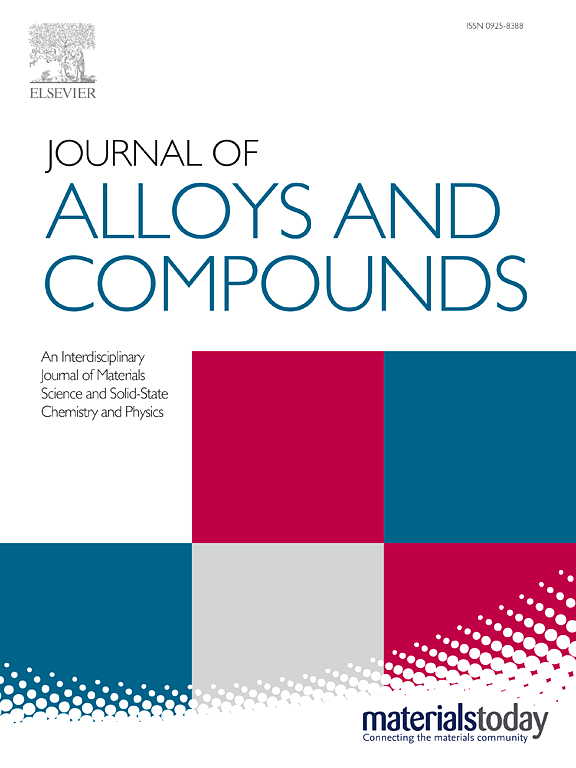High thermally stable Tm3+-doped alkali borosilicate glass: structure, Judd-Ofelt calculations, and near-pure blue light emission
IF 5.8
2区 材料科学
Q2 CHEMISTRY, PHYSICAL
引用次数: 0
Abstract
SiO2-B2O3-Na2O-NaF-WO3-La2O3 glasses doped with Tm2O3 were prepared using the melt-quenching method. The Tm3+-doped glasses were studied through XRD, DSC, FTIR, absorption spectroscopy, Judd-Ofelt (J-O) theory, and photoluminescence spectroscopy. According to the J-O theory, a high Ω2 value predicts a higher covalency between the Tm3+ and O2- ions. Under 359 nm excitation, all the glasses exhibit blue emission with a color purity above 99.26%. The emission intensity of the glass doped with 0.4 mol% Tm2O3 reaches the highest and then decreases due to the concentration quenching. It is connected with the energy transfer between the Tm3+-Tm3+ ions, which is predominantly governed by dipole-dipole interactions according to the Inokuti-Hirayama (I-H) model. On this basis, the Yokota-Tanimoto model confirmed that, in addition to donor-acceptor interactions, donor-donor interactions become increasingly significant as the doping concentration increases, emerging as a crucial factor in concentration quenching. At 423 K, the intensity of the glass retains 71% of its initial value, with a color shift ranging from 0.0002 to 0.0158, demonstrating its excellent luminescent thermal stability. In summary, the obtained glasses are candidate materials for LED fields, especially suitable for blue and white light display devices.高热稳定Tm3+掺杂碱硼硅酸盐玻璃:结构、Judd-Ofelt计算和近纯蓝光发射
采用熔融淬火法制备了掺杂Tm2O3的sio2 - b2o3 - na20 - naf - wo3 - la2o3玻璃。通过XRD、DSC、FTIR、吸收光谱、Judd-Ofelt (J-O)理论和光致发光光谱对Tm3+掺杂玻璃进行了研究。根据J-O理论,Ω2值越高,Tm3+和O2-离子之间的共价越高。在359nm激发下,所有玻璃都呈现蓝色发光,色纯度在99.26%以上。当掺量为0.4 mol% Tm2O3时,玻璃的发射强度达到最高,随后由于浓度猝灭而降低。它与Tm3+-Tm3+离子之间的能量传递有关,根据inokti - hirayama (I-H)模型,Tm3+-Tm3+离子之间的能量传递主要由偶极子-偶极子相互作用控制。在此基础上,Yokota-Tanimoto模型证实,除了供体-受体相互作用外,供体-供体相互作用随着掺杂浓度的增加而变得越来越显著,成为浓度猝灭的关键因素。在423 K时,玻璃的强度保持了其初始值的71%,色移范围从0.0002到0.0158,显示出其优异的发光热稳定性。综上所述,所获得的玻璃是LED领域的候选材料,特别适用于蓝白光显示器件。
本文章由计算机程序翻译,如有差异,请以英文原文为准。
求助全文
约1分钟内获得全文
求助全文
来源期刊

Journal of Alloys and Compounds
工程技术-材料科学:综合
CiteScore
11.10
自引率
14.50%
发文量
5146
审稿时长
67 days
期刊介绍:
The Journal of Alloys and Compounds is intended to serve as an international medium for the publication of work on solid materials comprising compounds as well as alloys. Its great strength lies in the diversity of discipline which it encompasses, drawing together results from materials science, solid-state chemistry and physics.
 求助内容:
求助内容: 应助结果提醒方式:
应助结果提醒方式:


